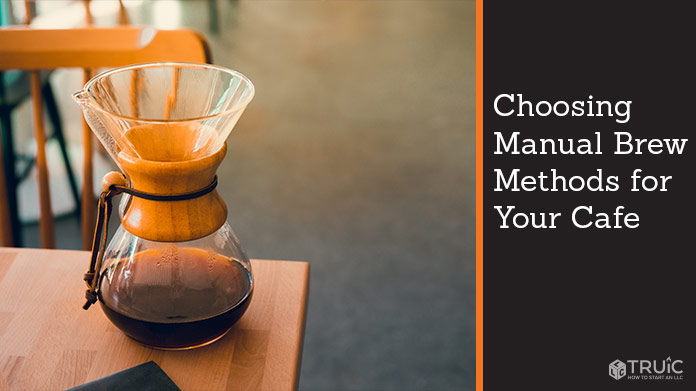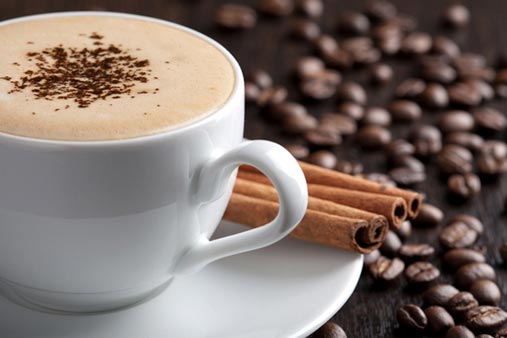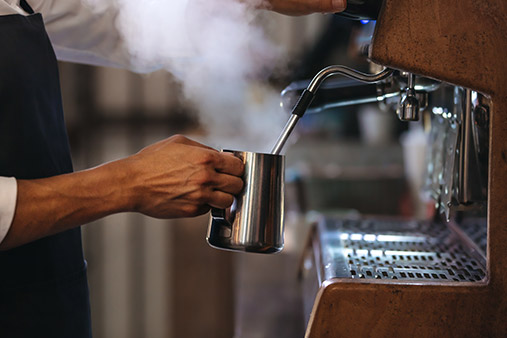Choosing Manual-Brew Methods for Your Cafe
Using manual brew methods not only showcases the high-quality coffee your cafe has to offer, but also creates a memorable customer experience.
This guide, written by coffee professionals, will help you decide which manual brew methods are right for your specialty cafe.
Recommended: Read our full, in-depth How to Start a Coffee Shop Business guides, inspired by coffee professionals, they will help make your coffee dreams real, from sourcing beans to hiring baristas, choosing the best POS system, forming an actual company, and everything in between.

Manual-Brew Methods
FRENCH PRESS
You may already know this classic manual-brew method, which involves simply weighing out coffee, adding hot water, and walking away for a few minutes. The result is a cup (or more) of coffee that can leave customers feeling like they’ve experienced something truly special.
This method focuses on a combination of immersion, extraction, and pressure. Unlike other manual-brew methods, a French press mixes coffee grounds and water in one vessel and then leaves them to sit for roughly five minutes before a barista pushes a plunger down to separate the two. The end product is a rich coffee with a thicker mouthfeel because this process does not filter out the extracted oils in the coffee. The wide range of available French press sizes will give you many options to meet customer needs.
Ideal For: French press coffee is a good fit for cafes with a moderate to high customer volume and an appreciation for the classics as well as slower cafes that want an alternative to the standard drip coffee.
AEROPRESS
This brew method combines pressure and immersion to produce a fast, clean cup of coffee in a just two or three minutes. Similar to the French press method, it involves immersing coffee grounds in water and allowing extraction to occur for up to three minutes. However, this method filters out the oils as a barista applies pressure to push the coffee into a cup. Typically producing about 10 ounces at a time, this method is relatively inexpensive and its required equipment is easy to clean.
Ideal For: Fast-paced cafes that want to offer customers something special without sacrificing time or efficiency during peak rush periods.
Recommended: Check out these AeroPress recipes for your coffee shop.
POUR OVER
Whether you use Chemex®, Kalita®, or other pour-over brewing equipment, you’re sure to produce a high-quality cup of coffee your customers will enjoy. This brew method is popular not only for its ability to highlight a specific coffee’s tastiest notes, but also for the experience it offers customers when they purchase a beverage made with extra care and attention.
The pour-over method involves a process of saturating and re-saturating coffee grounds in a circular motion. Baristas typically achieve this by manipulating a custom glass brewer that corresponds with the desired drink volume. This process usually takes up to five minutes, depending on the coffee type, and produces up to 20 ounces.
Ideal For: Due to the time and labor involved with this brew method, it’s better suited for small- to moderate-sized cafes. If you want to feature this method instead of — or in addition to — drip coffee in a busy cafe, consider designating a barista to handle all pour-over orders to ensure timely customer service.
Recommended: Check out these Chemex recipes or Hario V60 coffee dripper recipes for your cafe.
MOKA POT
If you want to skip third-wave coffee influences in your manual-brew method, the Moka pot may be a good option for your business. This classic Italian way to make a delicious, tiny cup of coffee requires access to a hot plate or stove.
The Moka pot is a little kettle with three sections:
The bottom, which holds the water;
The middle, which holds the coffee grounds; and
The top, into which the coffee will brew.
As the water heats up, it extracts through the grounds and fills the top chamber with brewed coffee. Baristas can then pour the coffee from the spout at the top of the kettle and serve.
Ideal For: Slower neighborhood cafes are the best choice for this type of manual-brew method because of the time it takes to produce as well as the additional requirement of a hot plate or stove.

